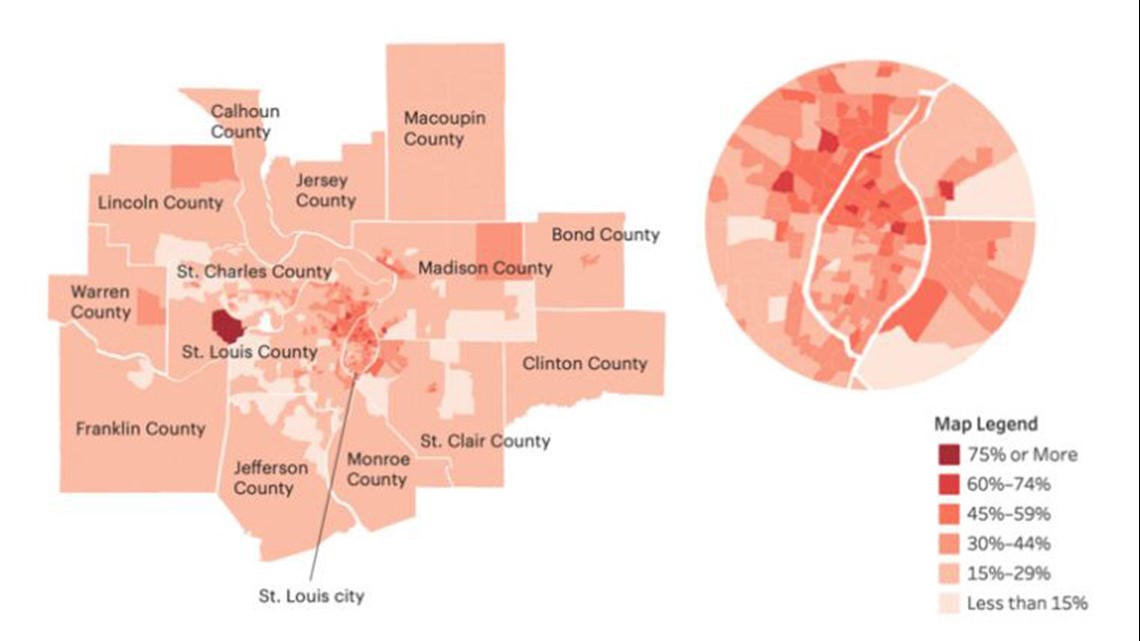ST. LOUIS — New “community resilience estimates” from the U.S. Census Bureau shed light on where St. Louis needs to devote resources to be better prepared for the next big disaster.
The Census Bureau defines community resilience as “the capacity of individuals and households to absorb, endure and recover from the health, social and economic impacts of a disaster such as a hurricane or pandemic.” To determine the resilience of a geographic area, it assesses risk factors for that area’s households and individuals.
In the map below, census tracts are shaded based on the percent of residents with three or more risk factors. The darker the census tract, the less resilient it is, according to the Census Bureau’s definition.


Elements considered in determining household risk factors include the income-to-poverty ratio, the number of employed residents, the level of crowding, the presence of linguistic or education-related communication barriers, and whether the residence is a single- or zero-caregiver household.
Elements that contribute to individual risk factors include age, health insurance status, disabilities, diabetes, serious heart conditions and emphysema or current asthma.
Census Tract 9800 in St. Charles County is the only tract in the St. Louis region where more than 75% of people have more than three risk factors. It has an estimated 13 residents.
More from the Business Journal
- New cancer treatment center coming to St. Louis County
- Explore St. Louis confused why city still hasn't issued debt for convention center expansion
- Fashion Fund to leave its downtown space, hunt for new office
- How Maryville’s Stacy Hollins brings a vintage touch to technology
- Logan University to provide land for new Chesterfield park



